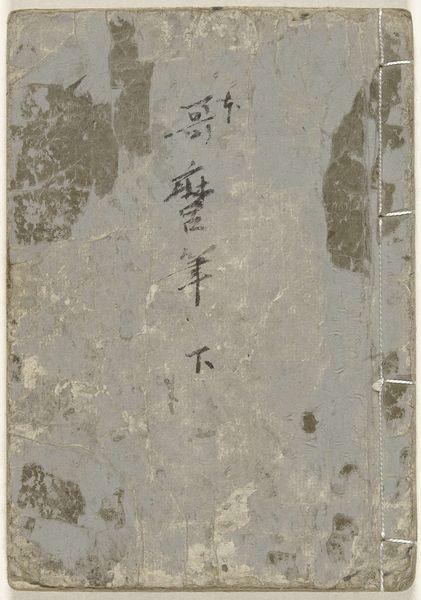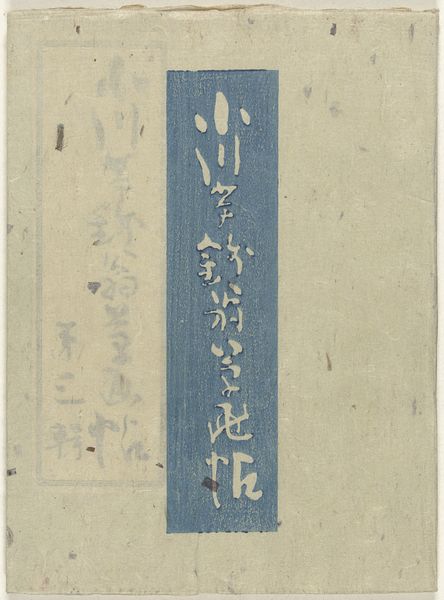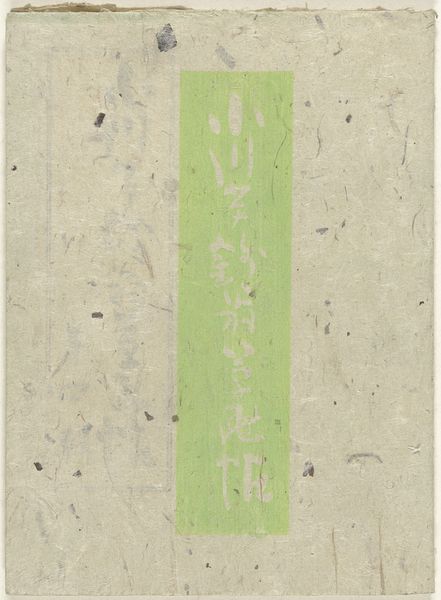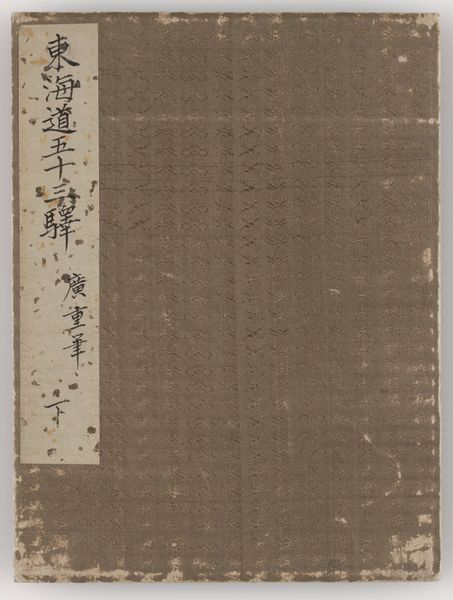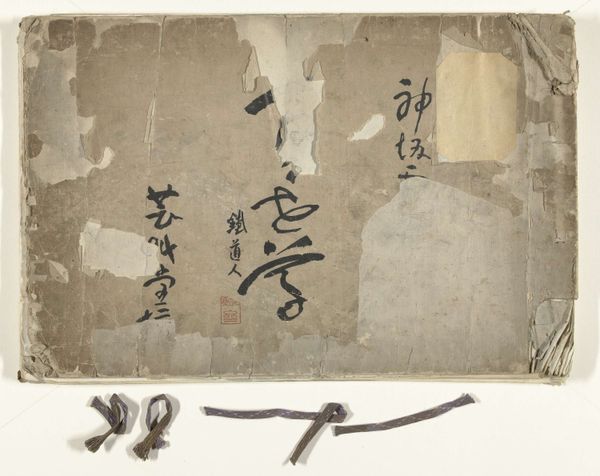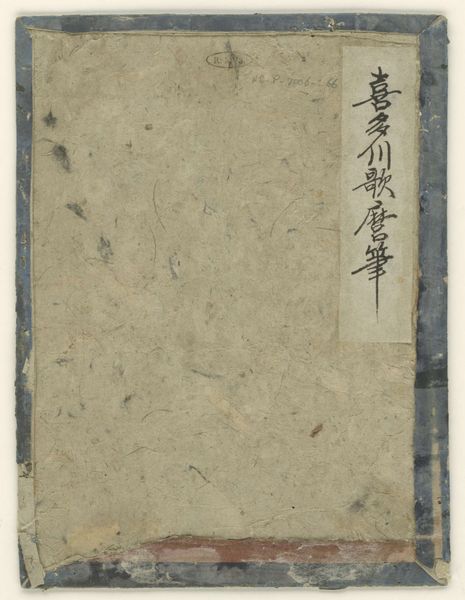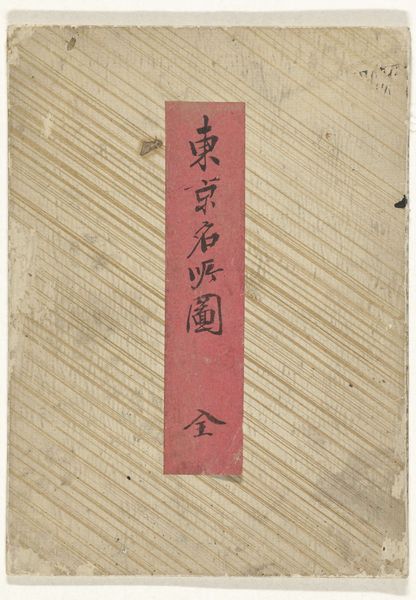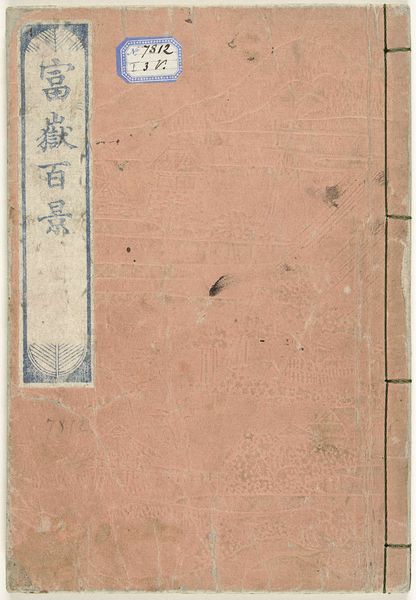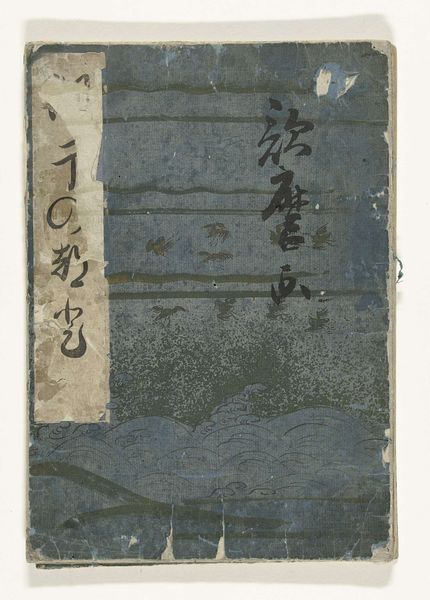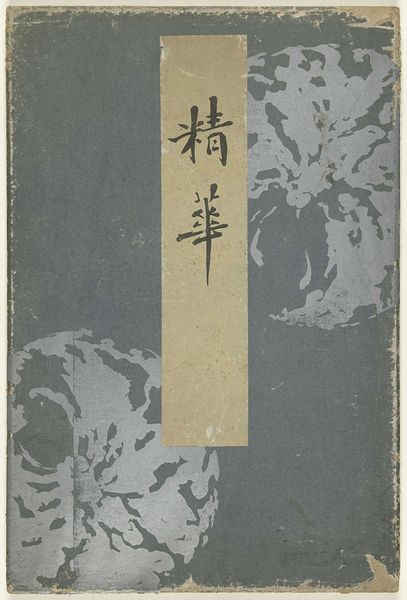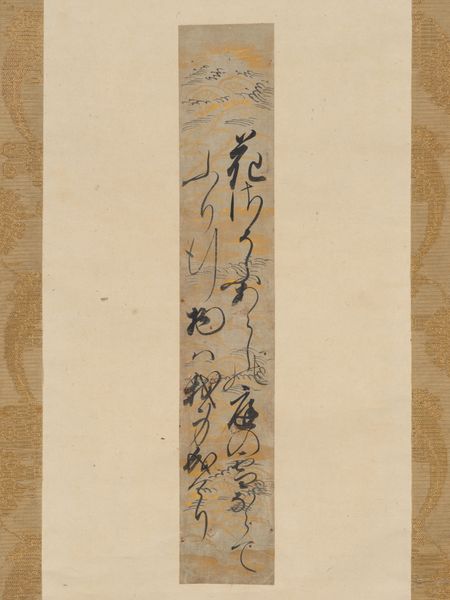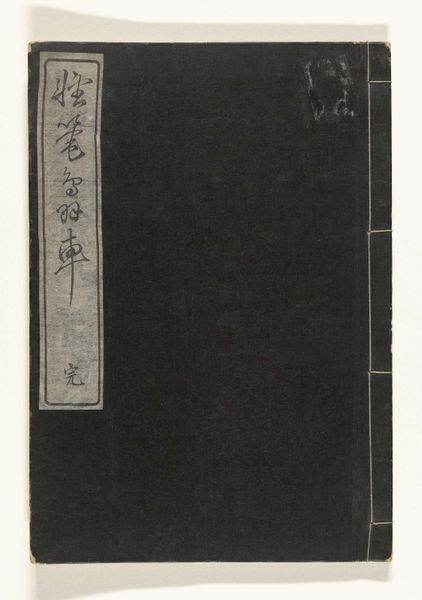
print, textile, paper
# print
#
book
#
textile
#
ukiyo-e
#
paper
Dimensions: height 152 mm, width 106 mm
Copyright: Rijks Museum: Open Domain
Curator: Let’s turn our attention to a rather intriguing piece: a Shunga album created by Kitagawa Utamaro in 1798, now held in the Rijksmuseum collection. Specifically, this is "Prentenboek over gewillige vrouwen - deel twee"—or, a picture book about willing women, part two. Editor: At first glance, the distressed texture of the textile cover immediately draws the eye. There is a fragility implied, a physical vulnerability in marked contrast perhaps with the artwork's explicit theme? Curator: Indeed. Ukiyo-e prints often carry multiple layers of meaning, playing with societal norms. We see here not just a scene but rather symbolic performance embedded within its cultural context. The intimate scenes, executed as meticulously crafted prints on delicate paper, acquire a symbolic significance reflecting desires, social status, and humor. Editor: Considering the visible materiality and composition, the cover serves almost as an abstract painting—the off-white label disrupts the gray field, offering textual elements in vertically stacked characters. It acts as a visual signifier of the artwork’s narrative potential, before we even consider its thematic core. Do we see any signs of color beyond shades of gray? Curator: Barely, it appears largely monochrome. This restricted palette directs the viewer's focus toward the line work and the dynamic compositions of the figures depicted inside, a common attribute in Shunga art of this era. Line is really the defining factor. But back to your point - it has served many roles from educational to political and more broadly, simply artistic. What interpretations can you bring to mind when looking at this? Editor: Given its genre, perhaps it explores ideas of pleasure or transgression within a rigidly stratified society? These scenes often challenged conventional social mores while simultaneously reaffirming existing power dynamics, a complex paradox that warrants careful examination through an art historical and psychoanalytic lens. It's like a mirror reflecting social attitudes towards gender and sexuality. Curator: Precisely. Shunga prints can unveil repressed aspects of a culture’s collective unconscious, illustrating both desires and anxieties related to intimacy and societal norms. As a historical object it is an intriguing synthesis. Editor: I agree; it really showcases the intersection of technique and the evocative potency inherent in art that is both intimate and public. Curator: Absolutely, a visual whisper across time, holding echoes of untold narratives.
Comments
No comments
Be the first to comment and join the conversation on the ultimate creative platform.
